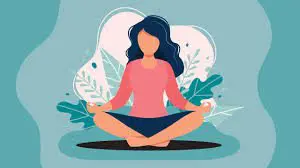 When we think about bucket lists it tends to be images of exquisite vacations, jumping out of planes and speeding around in a sports car. Now we don’t have a problem with any of that, especially the travel side of it, but a bucket list is so much more than that.
When we think about bucket lists it tends to be images of exquisite vacations, jumping out of planes and speeding around in a sports car. Now we don’t have a problem with any of that, especially the travel side of it, but a bucket list is so much more than that.
Your list is completely individual and can be anything you like, including wellness practices. At Make a Bucket List we are proud to encourage anything related to wellness, so what exactly is it? It is defined as a healthy habit practiced on a daily basis to attain better physical and mental health outcomes.
One such practice is Meditation, and it is something we have been doing for a couple of years. We originally added it to our bucket list as a way to manage anxiety and stress, and we have found it helps immensely.
So, have you considered adding meditation to your bucket list? You may be wondering what it involves and why you would even bother? We’ll try our best to give you a general guide on meditation for beginners, then direct you to some great resources.
Ad Disclaimer!
This website uses paid adverts and affiliate links, these come at no additional cost to you and help us to fund the operation of the website, meaning we can continue to provide you with valuable content.
The money received from these links and adverts do not influence any recommondations made within our content.
Page Contents
What is Meditation?
Meditation is a method of training the mind and your thoughts to create calmness. The technique uses mindfulness to help you focus your attention on a particular object, thought or activity. Over time you will be able to maintain the stable state and clear your mind of all thoughts for long periods, known as the ‘no mind’. This is said to raise the mind to another level of consciousness, which is why many religions use meditation as part of their tradition.
Due to the popularity of meditation, many studies have been conducted on its benefits to the body and brain. Of course, we’re not medically trained enough to provide you with the research, but there’s plenty of information online if you want to delve further. Meditation is renowned for reducing stress, anxiety, depression, pain, lower blood pressure and improve sleep. We can imagine that research will continue and provide a greater understanding of the benefits of meditation on our health.
How To Start Meditating
Most people who we have discussed meditation with, have told us that they have tried but they cannot do it. This totally makes sense to us because we can remember the frustration of sitting on a yoga mat, attempting a lotus position, as our brain whirred with thoughts, and we couldn’t control them. Each time we got more and more frustrated at the fact our minds took control and would randomly create a new thought to distract us. It’s only as we maintained the practice over time that we began to notice a quietening of our thoughts, and if any did creep in then we would simply push them away.
The great thing about meditation as a bucket list item is that it is something you can do anywhere and at any time, with zero cost. There are basic techniques to get you started and help you get comfortable with spending time with your mind.
These are a few tips and tricks to help you begin meditation.
Find Somewhere Comfortable
 We mentioned above about how we began our journey into meditation sat on a yoga mat, trying to shape our body into the lotus position. After a lot of research, we realised this was mistake number one, and we were trying to conform to an image of what meditation is and not focusing on the practice. The key to being able to focus is comfort, so look for somewhere you find comfortable; yes, even if that is the lotus position. Generally, we lie on our bed when we meditate, but you can sit on a chair or lie on a yoga mat, just make sure you’re in a comfortable position to begin.
We mentioned above about how we began our journey into meditation sat on a yoga mat, trying to shape our body into the lotus position. After a lot of research, we realised this was mistake number one, and we were trying to conform to an image of what meditation is and not focusing on the practice. The key to being able to focus is comfort, so look for somewhere you find comfortable; yes, even if that is the lotus position. Generally, we lie on our bed when we meditate, but you can sit on a chair or lie on a yoga mat, just make sure you’re in a comfortable position to begin.
The space you choose should feel calming, especially in the beginning, so we tend to close the curtains to make the room a little darker to aid the process. Also make sure you’re not too restricted clothing wise and can relax without anything digging into you.
If you struggle to find time at home, then in reality you can meditate anywhere, it could be in the office or on your commute to work. The more opportunities you have to practice meditation, the better you will get and the more it will transfer into your everyday life.
Set a Time Limit
When we started meditating, we set a time limit of 2 minutes, because we couldn’t imagine sitting there for longer. It then increased to 5 minutes, and we did that for quite a while. After hearing a podcast on meditation, we ended up going to 10 minutes and realised that to go deeper you need to practice for a longer time. Now we’re not suggesting that the day you start you begin at 10 minutes, but see it as a goal to work up to. Some practitioners meditate for an hour or more, so there really is no limit, but an hour can be pretty tough to squeeze into the day.
We set a timer on our phone if we’re self-guided or follow a 10-minute guided meditation on a streaming service.
When Should I Meditate?
This is going to be very individual but what we will say is that to do it daily, you need to make it into a habit. Most people prefer to do it in the morning, so it provides them with a calming start to their day and we love that idea. We tend to do the same, but if we have a busy morning then we will fit it in whenever we can. If you’re doing a 2-minute meditation, then why not do it as the kettle boils for your morning brew.
You can always use meditation at night as a way to relax before you sleep. Or of course you can do it twice a day, both morning and night, so that you’re providing your body with a sense of calm throughout the day.
One of the results of meditating is that the serene feeling you have as you’re doing the practice, should follow you into the real world. This means you will find yourself approaching life in a calmer manner and be able to deal with anything that arises with a level head. Again, this simply takes practice and following the techniques. We have certainly found that the way we deal with problems and difficult people is much calmer than before we began mediating.
Choose Your Method of Meditation
There are a few different types of meditation and although the basic premise is the same i.e., sit down and close your eyes, some may work better for you than others.
Guided Meditation – We found this was the perfect place to begin, because you have an instructor talking to you through the practice guiding your attention. There are lots of guided meditations on YouTube or streaming services such as Spotify. Most will talk you through your meditation and help focus your concentration on different elements such as the weight of your body, your breathing or any sounds around you. Headspace have a 10-minute guided meditation which we love, because it really focuses our attention on the emotions we’re feeling that day.
Concentration Meditation – This is a meditation practice where you focus on a single point which could be an object or a flame of a candle. Most practitioners repeat a specific word, otherwise known as a mantra, with the popular om / ohm / aum. As you concentrate you can listen to meditation sounds such as water or a repetitive gong. In the early stages you will find that focusing your mind is quite difficult, so our advice would be to start with guided meditation and then move onto this. Also begin for a shorter duration at the start and work your way up to longer periods of time.
What may surprise you with this form of meditation is that you don’t have your eyes closed. There isn’t a specific rule that to meditate you need to be in darkness, the practice is about focusing and clearing your mind of thoughts, which can be done with your eyes open or closed. By using an object for a focal point, you can bring your attention back to that spot should you find it wandering and we promise you it will happen regularly. As you practice letting go of those random thoughts, the more your concentration will improve.
Mindfulness Meditation – This is an interesting form of meditation and probably one to move onto as you develop your practice. Instead of pushing away your encroaching thoughts, you simply observe them and allow them to drift through your mind. Don’t attach yourself onto the thought, just be aware of it and the emotions that arise.
This format of meditation allows you to see if there are any particular patterns which arise throughout. You will notice an internal dialogue which for most can be guilt ridden, judgemental and unpleasant. Hopefully as you develop your practice, you’ll find an inner balance and less of a tendency to judge or self-criticise.
Moving Meditation – Because meditation is about creating a sense of inner peace and calm, it doesn’t always have to be sat or lying down with your eyes closed. The key to it is the focusing of your thoughts which will give your mind time to rest and the ability for your body to relax. There are a few moving meditation techniques such as tai chi, Qigong and walking meditation.
Notice How You’re Feeling
If you’re following a guided meditation, then they tend to focus your attention on how your body and mind feels. If you’re going solo, then think about the following questions.
- How does the body feel, is it heavy or light, still or restless.
- What is the quality of your mind, are you anxious, distracted, or tired.
- Scan through your body from head to toe and become aware of the parts which are relaxed and areas which maybe tense or in pain.
As you do this, you’re not attempting to change anything, you’re simply building up a picture of how the body feels. Be ok with whatever emotions or feelings you’re bringing with you to the meditation practice.
Feel Your Breath
 Once you have determined the state of your body and emotions, then you should feel a little more settled. Now it’s time to focus on the breath, which you can do by breathing in through the nose, so your chest expands. Then breathe out through your mouth and as you do so, you should feel your body relax. To enhance your focus deeper try counting one as you breathe in and two as you breathe out, repeating this until you reach ten and then starting again. Draw your attention to the practice of your breathing, so feel the air move in through your nose and your chest rise, then move out through your mouth as your chest falls. By focusing on these elements of your body, you should find your mind clears of all other distractions.
Once you have determined the state of your body and emotions, then you should feel a little more settled. Now it’s time to focus on the breath, which you can do by breathing in through the nose, so your chest expands. Then breathe out through your mouth and as you do so, you should feel your body relax. To enhance your focus deeper try counting one as you breathe in and two as you breathe out, repeating this until you reach ten and then starting again. Draw your attention to the practice of your breathing, so feel the air move in through your nose and your chest rise, then move out through your mouth as your chest falls. By focusing on these elements of your body, you should find your mind clears of all other distractions.
Notice When Your Mind Wanders
This is the key to meditation, and we can say with certainty that your mind will wander at some point. It’s natural for your mind to throw in the odd thought, so try not to get frustrated and fight it. Instead, be kind to yourself and if your mind wonders then reset your focus onto your breath and count again as you inhale and exhale. What you will notice after a while is that the number of times your mind wanders will reduce, or you’ll find it easier to reset your focus back on the body. After all meditation is a practice, so it will take time to get there.
Be Kind When Your Mind Wanders
When we began meditating, we would get so annoyed by the constant barrage of thoughts. So, in the end we’d walk away from it tenser than when we started. This obviously isn’t the correct method, as it led to us not enjoying what we were doing. Instead accept that you will have intrusive thoughts, and don’t see them as a problem you need to solve or correct. When they appear simply see them as friendly thoughts which are a part of you, but they are not all of you and as such they can be quietened. By being kind to yourself you will enjoy the practice much more.
Finish With Gratitude
Once you’ve finished your meditation session then take a moment to smile and feel gratitude for everything in your life, including your incredible body and all the work it does. Enjoy the moment of peace you have given yourself and the fact you’re committed to your mental and physical healing.
Commit to Yourself
Work out a moment of your day when you can commit to meditating and try to make it into a habit. If you’re stood in the morning waiting for the kettle to boil, then why not sit down and meditate at the same time. Or set the alarm 10 minutes earlier, get up and find a comfy spot to meditate. Most people who say they don’t like meditation or cannot do it, have either never tried it or done it once. Yes, the first time you do it the thoughts can be annoying, but as we have said before, it’s a practice and that takes time. Have in your mind a set number of days in which you’ll try meditation, it may only be a month, but that period of time will help you determine what works for you i.e., do you prefer self-guided or moving meditation.
Advice We’ve Been Given About Meditation
- Your mind will wander – It’s a given, and it can be frustrating, especially in the early days. If you find your attention drifting and you have to reset your focus, then you’re doing it right.
- Don’t worry about clearing the mind – You will hear many gurus talk about clearing the mind, so it makes sense that many of us have this as a goal. But the practice of meditation is much more than that. Yes, you will reduce your thoughts over time, but you will also start to think in the now and be present in your day-to-day life. By focusing on your body and being present in the moment you will find a calmness which will transcend into your daily life.
- There is no wrong way to meditate – Don’t worry if you have a day when your mind is constantly distracted, because some days will be better than others. There is no perfect way to meditate, just settle into the relaxation and peace and enjoy it.
- Give yourself the time – One of the problems we have found is that as we meditate, we know that we have so much we need to get done that day. These thoughts can really be distracting during the practice, so we’ve began to give ourselves permission to take the time out to meditate. That way we’re not stressing about a phone call or email, and we’re giving ourselves fully.
- Feel your emotions – If you find any feelings creep in, then rather than shooing them away, why not sit with them for a while. By doing this you can learn how to manage your feelings, whether they are good or bad and truly feel them, instead of the usual practice of avoiding them. Part of meditation is about learning how your mind works and we do that by removing ourselves from our thoughts or emotions and evaluating them as they creep in.
- Find a community of others – When you have others who enjoy the same things as you, then it makes life more interesting. You can look for a local meditation class or join / create a group on Instagram and Facebook. By doing this you have encouragement and support from others, plus you can ask any questions you may have.
Useful Tools to Help with Your Meditation
 Headspace – This is an app which provides science-backed meditation and mindfulness tools, so that you can build a daily practice to improve stress levels and your sleep. You can sign up for free but then you’ll find there is a monthly payment plan. We have found free Headspace guided meditations on Spotify which suit our needs. It just depends on how deep you want to go into meditation, because the app is useful for every experience level and offers short sessions or much longer ones.
Headspace – This is an app which provides science-backed meditation and mindfulness tools, so that you can build a daily practice to improve stress levels and your sleep. You can sign up for free but then you’ll find there is a monthly payment plan. We have found free Headspace guided meditations on Spotify which suit our needs. It just depends on how deep you want to go into meditation, because the app is useful for every experience level and offers short sessions or much longer ones.- Light Watkins – Having been a meditation and spiritual teacher for over 20 years, you can imagine Light Watkins is the perfect go-to for beginners. He has written a number of books and hosts his own podcast, but it was his interview on the Rich Roll podcast which introduced us to him. Within the conversation he dispelled a number of myths about meditation and in all honesty he simplified it, making it seem more achievable. We recognised that we’d began our meditation practice to find enlightenment, but we should have focused on the calm state that it has given to us. Sometimes having someone explain what it is and how to do it, is a great way to begin, as such we recommend checking him out.
- I Can’t Believe It’s Not Buddha – We’re all aware of the connection between meditation and Buddhism. As you delve deeper into the practice you may become interested in its connection to Buddha and attempt to discover what it all means. Now we can’t promise you that by listening to the podcast ‘I can’t believe it’s not Buddha,’ that you’ll understand Buddhism, we still don’t. But the presenters Lee Mack and Neil Webster try to understand both the religion and the deeper aspects of ‘the now’ and the egoic mind. The best part of this podcast is the fact it’s hilarious as both presenters attempt to find inner peace and spiritual enlightenment. They recommend a book called ‘The Power of Now’ by Eckhart Tolle, but we’re on our third attempt of reading it and still cannot understand it.
We’re hoping that you have everything you need to begin, because in essence all you have to do is simply start. Meditation is becoming increasingly popular, and we have seen more and more influencers telling us what we should do during our practice, how we should sit and what we should wear. The key to meditation is just to try it and give yourself permission to take some time out of your busy life. By doing this you will give yourself more focus, peace, and less anxiety; so, when you take that into consideration it’s definitely worth trying. There is no such thing as a perfect session, some days will be better than others, but if you’re taking time to relax your mind and body then it’s all good.
The reality is that most people don’t focus on their thoughts or the things happening in their body, they’re simply living. But by building a practice of gratitude for everything your body gives you, you’ll find a peace you didn’t know existed.